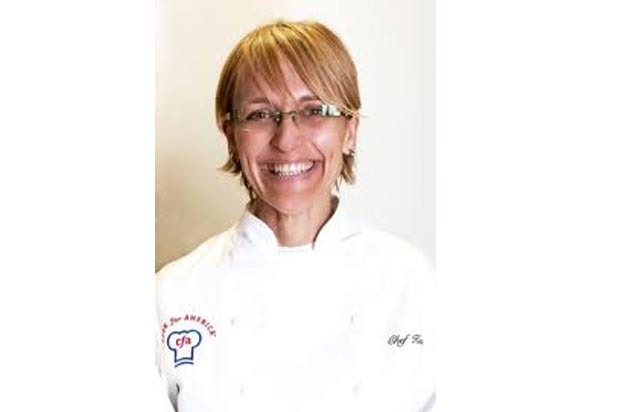The State Of School Lunches Slideshow
Edible Schoolyards
Alice Waters was a pioneer in recognizing the problem with school lunches, starting the first "Edible Schoolyard" in 1995 two years before the World Health Organization declared childhood obesity to be an epidemic. The first ESY, in collaboration with the Berkeley Unified School District, provided farm-fresh lunches, using produce grown by students, and nutritional education for students at the Martin Luther King Jr. Middle School. (It still does.)
There are now Edible Schoolyard programs in New Orleans, San Francisco, New York City, the Larchmont area of Los Angeles, and Greensboro, N.C. The program has evolved to include many aspects of schools' curricula, including essay-writing and even math. The project's announced goal is to establish Edible Schoolyards in every middle school in America.
The Renegade Lunch Lady
Chef-nutritionist Ann Cooper, otherwise known as The Renegade Lunch Lady, was brought on as the director of the Boulder Valley (Colo.) school districts nutrition services in 2008. In 2009, she founded the Food Family Farming Foundation, with the goal of making school lunches healthier by phasing out processed foods and integrating fresh, local ingredients.
Michelle Obama's Let’s Move! Campaign
First lady Michelle Obama launched her Lets Move! initiative in February, 2010. It claims nearly one in three children in America is overweight or obese — two in five in African-American and Hispanic communities.
Yum-O!
In 2006, Rachael Ray used her celebrity for good when she launched a nonprofit called (unfortunately) Yum-O!. In 2010, she teamed up with New York senator Kirsten Gillibrand to lobby Congress for higher reimbursement rates per meal for schools meeting federal nutrition guidelines, and for the elimination of trans-fats from school menus.
The St. Paul, Minn., School District
The St. Paul, Minn., school district has one of America's more successful healthful-lunch programs. The district has a central kitchen that distributes food to schools, using predominately local and sustainably produced ingredients to create meals from scratch. Among other things, dishes are made with reduced sodium.
Jean Ronnei, director of St. Paul Public Schools Nutrition and Commercial Services, reports that school staffers and students have shown excitement over the new program. Though Ronnei has seen more kids acquire a taste for fresh vegetables, she also mentions the harsh reality of using locally grown foods: Minnesota has a short growing season, thus limiting the availability of such ingredients for much of the year.
FoodCorps
FoodCorps, which came into being on Earth Day, 2009, is a national service program designed to improve nutrition and food awareness in public schools through nutritional education, school gardens, and farm-to-school programs. Though funded partially by AmeriCorps, the national service organization, FoodCorps is mostly dependent on donations.
Jamie Oliver’s Food Revolution
In 2004, English "Naked Chef" Jamie Oliver launched a school nutrition reform campaign in Britain called Feed Me Better, gaining a government pledge of almost £300 million ($473 million) toward improving school meals. Parents at some schools where Oliver's program had been put into effect rebelled, in at least one case pushing junk food to their offspring through the fence at mealtime. But generally, the campaign has been successful.
Cook for America
Former corporate lawyer turned chef Kate Adamick co-founded Cook for America in 2006 with the idea that schools have a moral responsibility not only to nourish students, but to teach them how to nourish themselves. Offering five-day Culinary Boot Camps for school "lunch teachers" (not "lunch ladies"), Adamick wants to ensure that 90 pecent of the food that a child eats during the day doesn't come in a package or box, but instead resembles something our grandparents would recognize as good in its truest essence. Cook for America has been so successful, says Adamick, that they are desperately trying to keep up with the demand for training programs.







